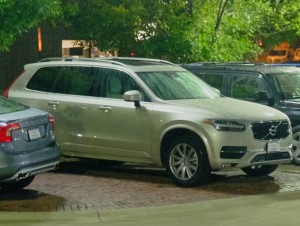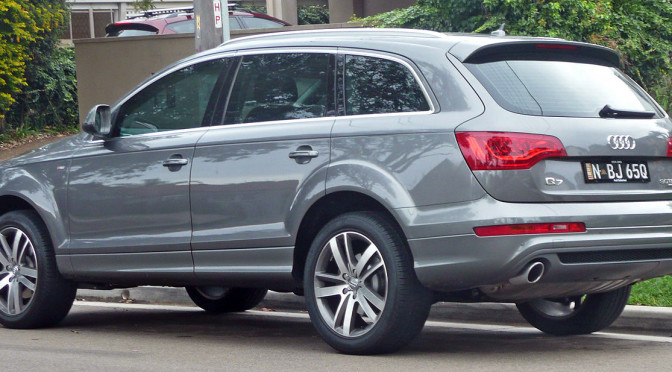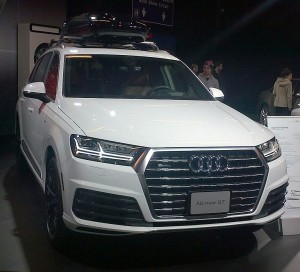It’s no secret that I consider side impact collisions some of the most deadly situations we can encounter on the road as drivers or passengers. Unlike frontal collisions, which are more common but also have much more material, relatively speaking between us and the vehicles colliding with us, there are only a few precious inches between you and the outside of your door in a side impact collision. A few precious inches between life and death.
In far too many cases, the end result of a side impact collision is death; 1 out of every 3 auto fatalities this year will result from a t-bone collision. I’ve written up many of these stories, but there are still far too many out there.
How do I find vehicles designed to keep my family safe from side impact crashes?
My desire to reduce the number of grieving families each year is precisely why I follow improvements in side impact crash protection design, and why I chose a metric–the degree to which vehicle structures kept away the intruding vehicle in the IIHS standard side impact test–to compare design improvements. With this information, I put together several lists a year of the safest vehicles for surviving side impacts. In 2015, I wrote up lists for the safest cars overall, the safest small cars, the safest small SUVs and crossovers, the safest minivans, and the safest SUVs overall for surviving such collisions. I promised to keep these lists updated with improvements in technology. Well, it’s 2016, and a new crop of vehicles are out. And things have changed.
 Last year, the best mainstream passenger vehicle you could buy to protect yourself in a side impact collision, by my metric, was the 2016 Volvo XC90. It featured a class leading 26 cm of resistance from the B-pillar to the center of the driver’s seat after a 31 mph side impact collision with a test sled simulating the equivalent of a 3,300 lb SUV (e.g., a Honda CR-V). This was the standard.
Last year, the best mainstream passenger vehicle you could buy to protect yourself in a side impact collision, by my metric, was the 2016 Volvo XC90. It featured a class leading 26 cm of resistance from the B-pillar to the center of the driver’s seat after a 31 mph side impact collision with a test sled simulating the equivalent of a 3,300 lb SUV (e.g., a Honda CR-V). This was the standard.
Thanks to Audi, there is a new standard.
The 2017 Audi Q7‘s test results were just released by the IIHS, and it is now the leader in the side protection race with 27.5 cm of resistance. This is greater than that of any other mainstream passenger vehicle whose results are currently available. Yes, it’s possible that a vehicle like the Model S or T might test higher, but in the absence of available data, right now, I’d recommend the new Q7 to families whose ultimate priority was side impact protection over any other vehicle currently for sale.
What if I’m not in a position to buy the new Q7?
If you’re not in a position to buy the new Q7 (I’m not either!), never fear. There are still a wide range of vehicles that offer excellent levels of side impact crash protection, and many of these are available for substantially less than the Q7. The list increases still further when you consider used vehicles; the primary job of a car, after all, isn’t to look new, but to keep you safe while transporting you and your loved ones from one place to another.
If you’re looking for a comparable SUV, check out this list; it includes a range of SUVs within 7 cm of the Q7, including the aforementioned 2016 Volvo XC90, the 2014+ BMW X5, the 2011+ Mercedes-Benz GLK, the 2011+ Ford Explorer, the 2009+ Audi Q5, and the 2010+ Volvo XC60.
Are older vehicles going to offer comparable safety, though?
Yes! As long as a vehicle hasn’t been in a collision or been otherwise damaged by rust, corrosion, or flooding, you should be able to expect the same level of crash protection performance from it years or even decades after it was originally made. Airbags, for example, are designed to last for the lifetime of a vehicle without maintenance. Seat belts should be inspected after 15 years or so, and replaced as needed if they show signs of wear or fraying, but the actual crash mitigation structures within the frame of the vehicle should easily last the life of the vehicle.
Any of these vehicles will offer nearly as much side impact resistance as that of the current generation Q7, and some will do so for substantially less money. The Q5, for example, has maintained the same design, which offers 23 cm of side impact protection, since 2009, which means you can find used models for substantially less than what you’d spend new. Similarly, the XC60, released in 2010, offers 22 cm of protection, which is still better than what you’ll find from the vast majority of cars, minivans, and SUVs on the road, new or used. The Ford Explorer’s design dates back to 2011, and is your best bet for finding side impact protection at this caliber with 3 row seating on a budget.
What about if I’m looking for side impact protection in cars or minivans? Can they be as safe as SUVs?
Yes! The best cars offer just as much side impact intrusion resistance as the best SUVs; car safety has improved by leaps and bounds in recent years. The good news is that you can also find excellent levels of safety with smaller cars too, which means you don’t have to spend lots of money or compromise on parking maneuverability or fuel economy in order to drive safely. Remember, in fact, that small cars can even be safer than large SUVs or pickup trucks in many cases.
It’s also important to remember that, if at all possible, the best way to avoid dying in a side impact collision is to avoid getting into one to begin with. That means not driving if you can (by using public transportation, walking, or cycling as alternatives), followed by driving as little as possible, followed by choosing the safest vehicles you can find.
I’ll keep working to spread the word about the importance of considering side impact protection when choosing a new or used vehicle for one’s family or loved ones. I hope to have more comparison lists out soon regarding 2016 cars, SUVs, and minivans.
If you find the information on car safety, recommended car seats, and car seat reviews on this car seat blog helpful, you can shop through this Amazon link for any purchases, car seat-related or not. Canadians can shop through this link for Canadian purchases.


